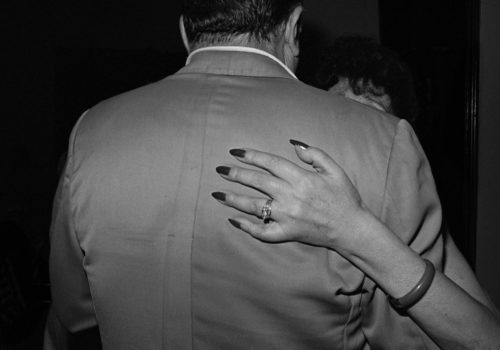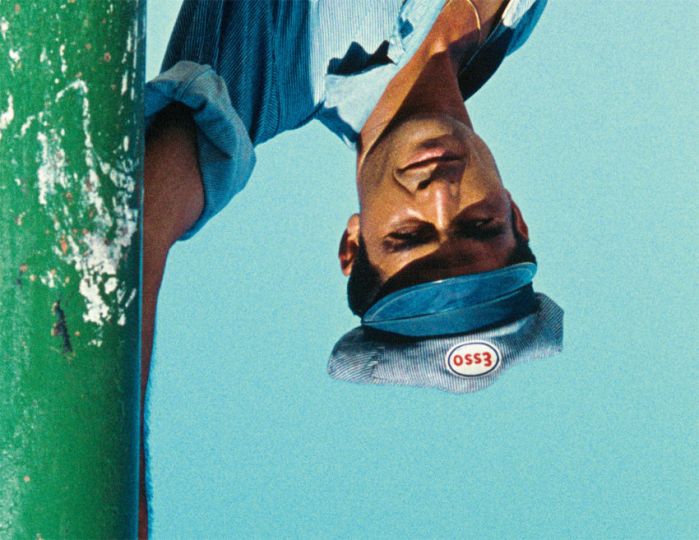When the Chilean photographer Paz Errázuriz began her career in the 1970s, her country was at the beginning of a dictatorship which would last almost twenty years. “We had almost no material and it was very difficult to find film and it was often the foreign correspondents covering protests who would give us some. On top of that, the police would confiscate cameras and mistreat photographers.”
This tense context did not stop a few self-taught photographers from using photography to take a stand and speak out. “At the time, I worked with a group of local photojournalists who were documenting the situation in the streets of Santiago. It was a form of political resistance, which is sometimes photography’s role,” she reflects. To protect themselves, they founded the AFI (Independent Photographer’s Association), since the profession up until then had been very solitary. “This group gave us legal status and the military police would have to pay more attention when they arrested us. The fact of being many made it easier to distribute images.”
Together, they met the Magnum photographer Susan Meiselas, coming in 1988 to cover the results of the referendum that put into play Pinochet’s extension of power. The victory of the “no” camp led to a democratic transition, and the group’s visual documentation resulted in a mythic book. Returning one year later to Santiago, Meiselas worked with them on the edition of Chile from Within, published in 1990 in the United States by WW Norton & Company and republished digitally in 2013. “We were twelve photographers, and Susan taught us how to make a book, to work together, like a group. It was an incredible experience,” recounts Errázuriz.
To get around the constraints of the dictatorship, she used black and white, which allowed her to control the images up to their processing. “You couldn’t always trust your photos in a laboratory,” she explains. “Especially since I risked putting my subjects in danger.” The photographer then worked on an extremely subversive subject for the military authorities: transvestites.
This series, titled Adam’s Apple, reflects the intimacy that Errázuriz had with her subjects. Far from distancing themselves, the largely condemned community dressed and undressed in front of her without shame, showing off their fishnet pantyhose, low-cut dresses against decrepit walls, without ever putting on an act. “Daily life continued even in the middle of a brutal dictatorship. We dressed ourselves to live in times of risk,” she says. The series also includes one of Errázuriz’s rare color portraits, dated from 1983. She fixed the lens on Evelyn, lips and eyelids blackened with makeup. Only her high cheekbones and gaze stand out from the monochromy of her cheeks and wallpaper. “I had to photograph in color because there was no more black and white film,” she explains.
Whether it be with a group of transvestites or with other minorities that she documented, Errázuriz temporarily shares the life of her subjects, coming back a few weeks later to show them the photos and offering them some. “What matters most to me is that the people I photograph know my intention and trust me, because these are marginal groups who often do not want to see any outsiders in the middle of their way.”
In fact, couples of patients from a psychiatric institution, which she would photograph years later in the series El Infarto del Alma (Soul’s Infarct), found inspired approval in her photographs. “When I offered them the photo, they took it like a marriage certificate because they were never allowed to be married at the hospital,” she remembers. Their postures are awkward but their expressiveness is bewildering, spreading a field of loving emotions without caring about the normative.
With the rigor of an anthropologist, Errázuriz concentrated on several distinct social groups: patients from psychiatric hospitals, boxers, the circus, women, dancers, indigenous people from the country’s extreme south. “I saw a part of the society to which no one paid attention. We speak of minorities while, in reality, they represent the majority. It’s the best education there is, learning to get to know all these groups,” she explains.
And from group to group, adopting typology as visual language, Errázuriz finished by making an eclectic portrait of the Chilean human landscape, despite lacking recognition and financial support. “Thankfully, I had the chance to receive a Guggenheim grant , the first offered to a Latin American photographer, in 1986. That helped me to follow and pursue my projects during a difficult time where there was a lot of unemployment.”
Laurence Cornet
Laurence Cornet is a journalist specialized in photography and an independent exhibition curator. She splits her life between New York and Paris.
Paz Errázuriz, A Poetics of the Human
Festival des Rencontres de la Photographie d’Arles 2017
From July 3 through September 24, 2017
Arles, France

















